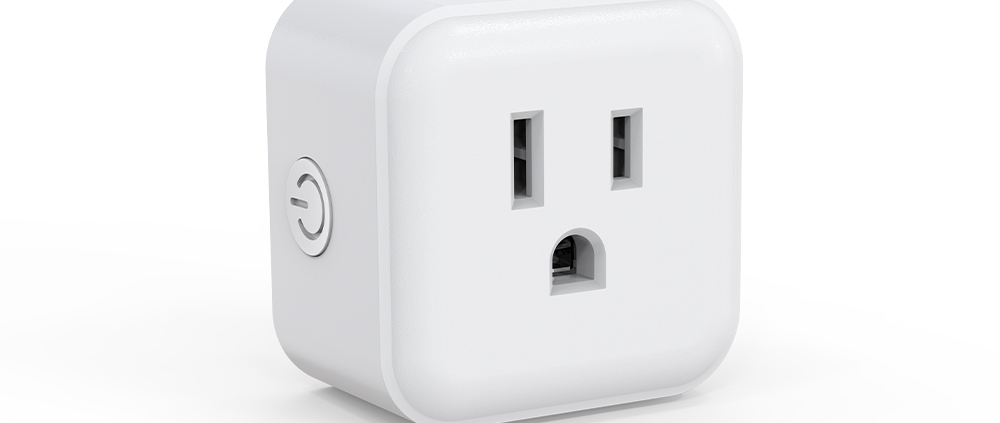Unlocking Convenience with Z-Wave Indoor Sockets
Well, step into the future of effortless home control with Z-Wave indoor sockets! These unassuming little devices are genuine game-changers, quietly transforming how you interact with everyday appliances and lights. Let’s explore why they might just become your favorite smart home upgrade.
What Exactly Are Z-Wave Indoor Sockets?
Think of them as super-smart power adapters. You simply plug them into your existing wall outlet. Then, plug your lamp, fan, coffee maker, or other device into them. Crucially, they contain a tiny Z-Wave radio. This allows them to communicate wirelessly with the rest of your smart home system. So, instead of manually flipping a switch, you command them remotely – from your phone, a voice assistant, or even automatically based on schedules or other triggers. Essentially, they add a layer of intelligence to your ordinary appliances.
Why You’ll Absolutely Love Having Them: Key Perks
The benefits of adding Z-Wave indoor sockets are immediate and tangible:
-
Command Power Anywhere, Anytime: Forgot to turn off the iron before leaving? Need to turn on a lamp to welcome you home? Simply open your smartphone app, tap a button, and it’s done. Plus, control them using popular voice assistants for truly hands-free convenience – “Hey Google, turn on the living room lamp!”
-
Automate Your World & Save Effort: This is where the magic truly shines. Imagine:
-
Your bedside lamp gradually brightening to wake you up gently.
-
Living room lamps turning on automatically at sunset and off when you go to bed.
-
The coffee maker kicking on 10 minutes before your alarm.
-
All non-essential electronics shutting down when you arm your security system.
-
Essentially, you set the rules once, and your sockets handle the rest, day after day.
-
-
Gain Insight & Potential Savings: Many Z-Wave sockets offer energy monitoring. This means you can actually see how much power that old space heater or gaming console is consuming through the app. Armed with this knowledge, you can identify energy vampires and make smarter choices, potentially lowering your electricity bill. Better yet, set automations to turn off devices when they reach a certain usage threshold or aren’t needed.
-
Safety & Peace of Mind: Remote control offers inherent safety benefits. Worried you left something on? Just check and turn it off instantly from anywhere. Furthermore, creating the illusion of someone being home by automating lights while you’re away is a simple yet effective security boost.
-
Easy Integration & Reliability: Z-Wave is renowned for its robust mesh networking. What does this mean for you? Each Z-Wave device acts like a tiny signal booster, helping commands reach others reliably throughout your home. Therefore, you get strong, consistent performance without relying solely on your Wi-Fi router. Plus, Z-Wave devices are designed to work seamlessly together across different manufacturers (just ensure they are Z-Wave certified!).
How Do These Clever Sockets Actually Work? (The Simple Version!)
Don’t worry, it’s less complex than it sounds!
-
The Hub is Key: You need a Z-Wave hub or controller (like those built into many security systems or standalone hubs). This is the “brain” of your Z-Wave network.
-
Simple Setup: Plug the Z-Wave socket into your wall outlet. Next, plug your device (lamp, fan, etc.) into the socket. Then, follow your hub’s instructions to add (“include”) the new socket to your network – usually just a button press on the hub and the socket.
-
Control & Automate: Once added, the socket appears in your smart home app. From here, you can rename it (“Desk Lamp”), group it with other devices (“Downstairs Lights”), create schedules, and build powerful automations linking it to motion sensors, door sensors, or other smart devices. Suddenly, that ordinary lamp becomes part of your intelligent home ecosystem!
Choosing the Perfect Z-Wave indoor Sockets for You: What to Consider
Ready to shop? Keep these points in mind:
-
Power Rating: Ensure the socket can handle the wattage of the device you plan to plug in (especially important for heaters or high-power tools).
-
Physical Size & Shape: Some sockets are bulky. Check they won’t block adjacent outlets or look awkward. Slimmer designs are often preferable.
-
Energy Monitoring: Do you want the ability to track energy usage? Not all sockets offer this feature, so decide if it’s important for you.
-
Control Type: Most offer simple on/off. However, some advanced models offer dimming capabilities for compatible lamps – crucial if you want adjustable lighting levels.
-
Hub Compatibility: Always double-check that the socket is certified for Z-Wave and is compatible with your specific hub/controller model. Look for the official Z-Wave certification logo.
Getting Started is Easier Than You Think!
Honestly, installing Z-Wave sockets is one of the simplest smart home upgrades. Just remember:
-
You need a Z-Wave hub first. This is non-negotiable.
-
Start small. Grab one or two sockets for frequently used lamps or appliances. See how you like them!
-
Explore automation. Don’t just stop at remote control. Dive into your hub’s app and experiment with simple schedules or triggers – that’s where the real convenience unfolds.
-
Name them clearly! “Lamp by Couch” is far more useful than “Z-Wave Switch 01”.
Embrace Effortless Control!
Z-Wave indoor sockets are the unsung heroes of a truly convenient smart home. They solve simple, everyday annoyances and unlock powerful automation with minimal effort and installation hassle. From banishing the fear of forgotten appliances to welcoming you home with perfectly timed lights, to giving you insights into your energy use, they deliver genuine value. So why not give your ordinary outlets an intelligence upgrade? You might be surprised at just how much smarter – and easier – your daily life becomes.



